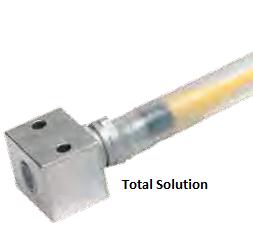Challenge: High Acceleration Machine Movement
Fundamental application problem: Anything mounted to the moving mechanism must be low mass
- Added mass reduces acceleration capability of a given motor & drive system
- Added mass increases motor and drive size requirements to meet acceleration specs, driving costs higher
- Larger motors increase energy consumption, which makes the machine less competitive in the market
- Any space taken up by sensors reduces space available for tooling and work-in-process
- Conventional prox sensors and brackets are much too large and heavy to address these requirements
Solution: Incredibly miniaturized, self-contained inductive proximity sensors
- Tiny size = inherently low mass
- Correspondingly tiny mounting brackets = inherently low mass
- Totally self-contained electronics = zero space taken up by separate amplifier
- Miniaturization of sensors allows no-compromise installation in compact tooling
- Additional tooling sensors enhance the level of high-end machine automation/control that can be achieved
Stay tuned to this space for more precision sensing challenges and solutions. Miniaturized sensors are also available in photoelectric, capacitive, magnetic cylinder, ultrasonic, and magnetic encoder. Click here to see the whole mini family.










